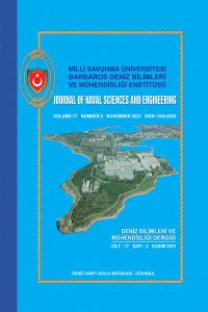HOSPISIGN: AN INTERACTIVE SIGN LANGUAGE PLATFORM FOR HEARING IMPAIRED
-,
___
- H. Cooper, B. Holt, and R. Bowden, (2011).Sign Language Recognition, in Visual Analysis of Humans, Springer, pp. 539–562.
- L. R. Rabiner, (1989).A Tutorial on Hidden Markov Models and Selected Applications in Speech Recognition,Proceedings of the IEEE, vol. 77, no. 2, pp. 257–286.
- D. J. Berndt and J. Clifford, Using Dynamic Time Warping to Find Patterns in Time Series,in KDD Workshop, vol. 10, 1994, pp. 359– 370.
- T. Starner and A. Pentland, (1997).Real-time American Sign Language Recognition from Video Using Hidden Markov Models,in Motion-Based Recognition. Springer, pp. 227–243.
- K. Grobel and M. Assan, Isolated Sign Language Recognition using Hidden Markov Models,in IEEE Systems, Man, and Cybernetics International Conference on Computational Cybernetics and Simulation, vol. 1, 1997, pp. 162–167.
- C. Vogler and D. Metaxas, Parallel Hidden Markov Models for American Sign Language Recognition,in the Proceedings of the IEEE Seventh International Conference on Computer Vision, vol. 1,1999, pp. 116–122.
- H.-K. Lee and J. H. Kim,(1999).An HMM-based Threshold Model Approachfor Gesture Recognition, IEEE Transactions on Pattern Analysis and Machine Intelligence (PAMI), vol. 21, no. 10, pp. 961– 973.
- X. Chai, G. Li, X. Chen, M. Zhou, G. Wu, and H. Li, Visualcomm: A Tool to Support Communication betweenDeaf and Hearing Persons withthe Kinect, in Proceedings of the 15th International ACM SIGACCESS Conference on Computers and Accessibility. ACM, 2013, p. 76.
- S. Theodorakis, V. Pitsikalis, and P. Maragos, (2014).Dynamic Static Unsupervised Sequentiality, Statistical Subunits and Lexicon for Sign Language Recognition, Image and Vision Computing, vol. 32, no. 8, pp. 533–549.
- V. Pitsikalis, S. Theodorakis, C. Vogler, and P. Maragos,Advances in Phonetics-based Sub-unit Modeling for Transcription Alignment andSign Language Recognition, in IEEE Computer Society Conference onComputer Vision and Pattern Recognition Workshops(CVPRW), 2011.
- Z. Zhang, (2012). Microsoft Kinect Sensor and Its Effect, MultiMedia, IEEE,vol. 19, no. 2, pp. 4–10.
- B. S. Parton, (2006). Sign Language Recognition and Translation: A Multidiscipline Approach from the Field of Artificial Intelligence,Journal of Deaf Studies and Deaf Education, vol. 11, no. 1, pp. 94–101.
- J. Shotton, T. Sharp, A. Kipman, A. Fitzgibbon, M. Finocchio, A. Blake, M. Cook, and R. Moore, (2013). Real-Time Human Pose Recognition in Parts from Single Depth Images, Communications of the ACM, vol. 56, no. 1, pp. 116–124.
- S. Cox, Speech and Language Processing for a Constrained Speech Translation System, in INTERSPEECH, 2002.
- S. Cox, M. Lincoln, J. Tryggvason, M. Nakisa, M. Wells, M. Tutt, and S. Abbott, Tessa, a System to Aid Communication with Deaf People,in Proceedings of the Fifth International ACM Conference on Assistive Technologies, 2002, pp. 205–212.
- O. Aran, I. Ari, L. Akarun, B. Sankur, A. Benoit, A. Caplier, P. Campr and A. H. Carrillo (2009). SignTutor: An Interactive System for Sign Language Tutoring, IEEE MultiMedia, no. 1, pp. 81–93.
- Z. Zafrulla, H. Brashear, P. Yin, P. Presti, T. Starner, and H. Hamilton, American Sign Language Phrase Verification in an Educational Gamefor Deaf Children, 20th IEEE International Conference on PatternRecognition (ICPR), 2010, pp. 3846–3849.
- K. A. Weaver and T. Starner, We need to communicate!: Helping Hearing Parents of Deaf Children Learn American Sign Language, in The Proceedings of the 13th International ACM SIGACCESS Conference on Computers and Accessibility. ACM, 2011, pp. 91–98.
- M. Hrùz, P. Campr, E. Dikici, A. A. Kındıroğlu, Z. Krnoul, A. Ronzhin, H. Sak, D. Schorno, H. Yalcin, L. Akarun, O. Aran, A. Karpov, M. Saraçlar, M. Železný,(2011). Automatic Fingersign-toSpeech Translation System,Journal on Multimodal User Interfaces,vol. 4, no. 2, pp. 61–79.
- Z. Zafrulla, H. Brashear, T. Starner, H. Hamilton, and P. Presti, AmericanSign Language Recognition with the Kinect, in Proceedings of the 13th International Conference on Multimodal Interfaces, ACM, 2011, pp. 279–286.
- E. Efthimiou, S.-E. Fotinea, T. Hanke, J. Glauert, R. Bowden, A. Braffort, C. Collet, P. Maragos, and F. Lefebvre-Albaret, The DictaSignWiki: Enabling Web Communication for the Deaf,Computers Helping People with Special Needs, Springer, 2012.
- A. Karpov, Z. Krnoul, M. Zelezny, and A. Ronzhin, (2013).Multimodal Synthesizer for Russian and Czech Sign Languages and Audio-Visual speech, Universal Access in Human-Computer Interaction. Design Methods, Tools, and Interaction Techniques for eInclusion. Springer, pp. 520–529.
- X. Chai, G. Li, Y. Lin, Z. Xu, Y. Tang, X. Chen, and M. Zhou,Sign Language Recognition and Translation with Kinect, in IEEE Conference on Automatic Face and Gesture Recognition, 2013.
- J. Gameiro, T. Cardoso, and Y. Rybarczyk, (2014).Kinect-sign: Teaching Sign Language to Listeners through a Game, in Innovative and Creative Developments in Multimodal Interaction Systems. Springer, pp. 141–159.
- Z. Zafrulla, H. Brashear, H. Hamilton, and T. Starner, Towards an American Sign LanguageVerifier for Educational Game for Deaf Children,in Proceedings of International Conference on Pattern Recognition (ICPR), 2010.
- V. Lopez-Ludena, C. Gonzalez-Morcillo, J. Lopez, R. Barra-Chicote, R. Cordoba, and R. San-Segundo, (2014). Translating Bus Information into Sign Language for Deaf People, Engineering Applications of Artificial Intelligence, vol. 32, pp. 258–269.
- T. Kadir, R. Bowden, E. J. Ong, and A. Zisserman,Minimal Training, Large Lexicon, Unconstrained Sign Language Recognition, in British Machine Vision Conference (BMVC), 2004.
- ISSN: 1304-2025
- Yayın Aralığı: 2
- Başlangıç: 2003
- Yayıncı: Milli Savunma Üniversitesi Deniz Harp Okulu Dekanlığı
SURVEY ON VISIBILITY AND DATA DISTRIBUTION IN DISTRIBUTED VIRTUAL ENVIRONMENTS
Yekta KILIÇ, Gürkan KOLDAŞ, Şafak ÇEVİKBAŞ
KERNEL ELM BASED AGE ESTIMATION
Furkan GÜRPINAR, Heysem KAYA, Sadaf AFSHAR, Hamdi DİBEKLİOĞLU, Albert SALAH
Muhammed SÜZGÜN, Hilal ÖZDEMİR, Necati CAMGÖZ, Ahmet KINDIROĞLU, Doğaç BAŞARAN, Cengiz TOGAY, Lale AKARUN
USABILITY COMPARISON OF LARGE TOUCHSCREEN SYSTEMS VERSUS DESKTOP-SIZE AND MOBILE-SIZE SCREEN SYSTEMS
